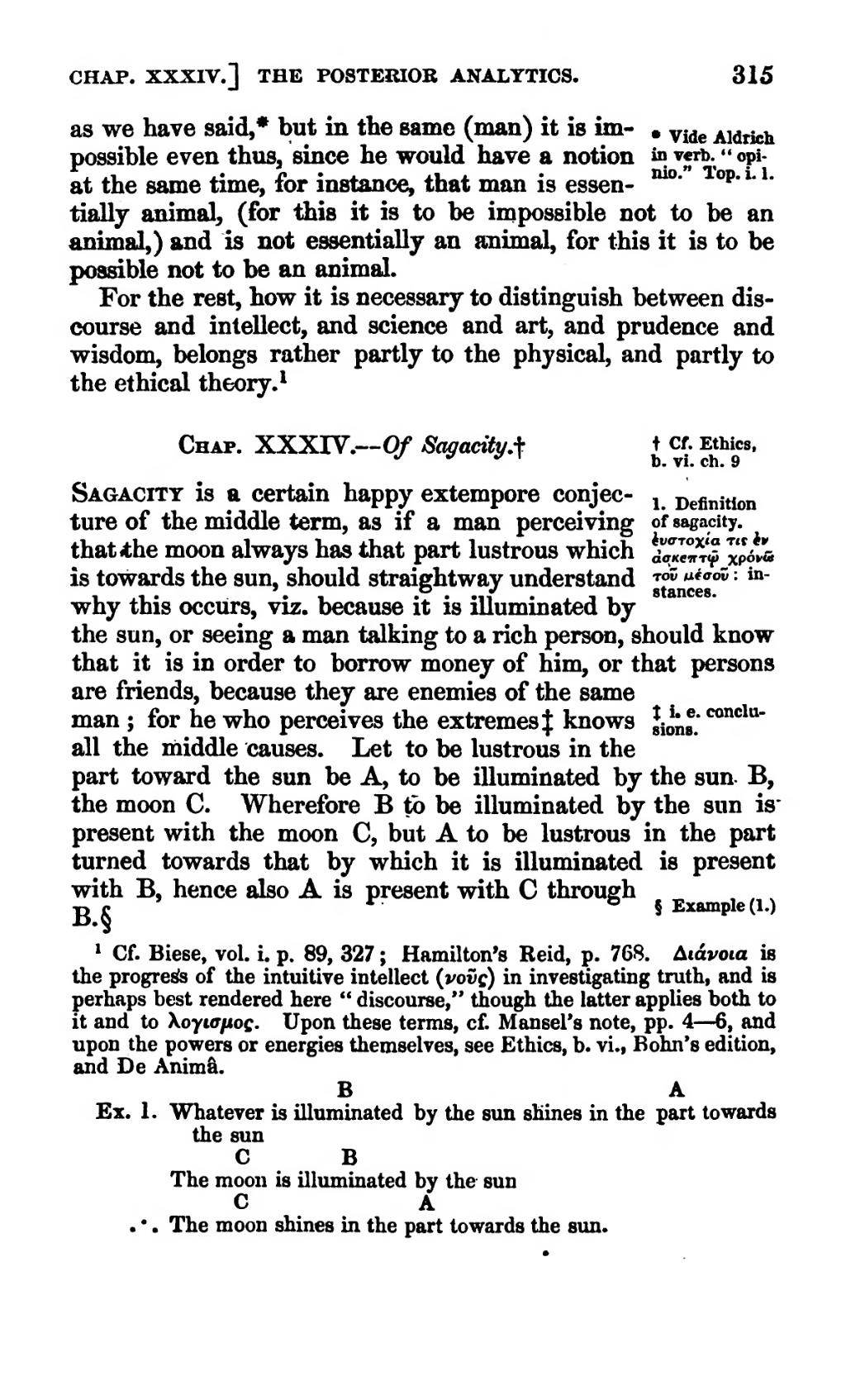as we have said, but in the same (man) it is impossible even thus, since he would have a notion at the same time, for instance, that man is essentially animal, (for this it is to be impossible not to be an animal,) and is not essentially an animal, for this it is to be possible not to be an animal.
For the rest, how it is necessary to distinguish between discourse and intellect, and science and art, and prudence and wisdom, belongs rather partly to the physical, and partly to the ethical theory.
Chapter 34
Sagacity is a certain happy extempore conjecture of the middle term, as if a man perceiving that the moon always has that part lustrous which is towards the sun, should straightway understand why this occurs, viz. because it is illuminated by the sun, or seeing a man talking to a rich person, should know that it is in order to borrow money of him, or that persons are friends, because they are enemies of the same man; for he who perceives the extremes knows all the middle causes. Let to be lustrous in the part toward the sun be A, to be illuminated by the sun B, the moon C. Wherefore B to be illuminated by the sun is present with the moon C, but A to be lustrous in the part turned towards that by which it is illuminated is present with B, hence also A is present with C through B.
